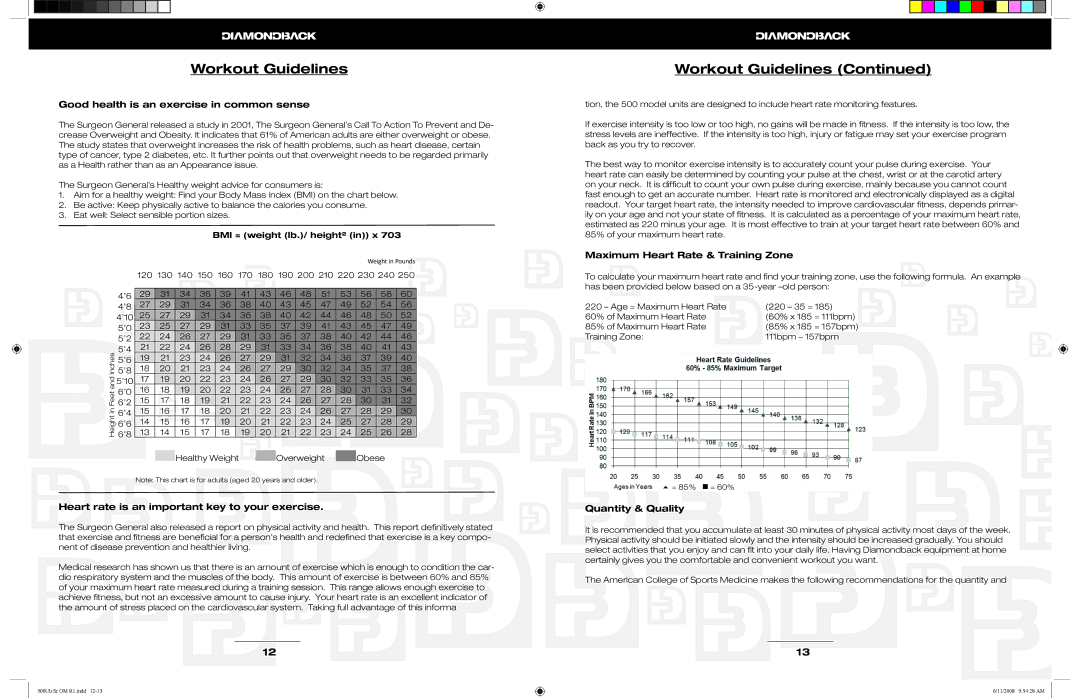500Ub, 500Sr specifications
The Diamondback 500Sr and 500Ub are impressive additions to the world of advanced bicycles, designed for cyclists who demand performance, versatility, and style. These models embody a perfect balance of cutting-edge technology and innovative design, catering to both enthusiasts and everyday riders.The Diamondback 500Sr features a lightweight aluminum frame that provides durability without sacrificing agility. This frame design not only enhances performance but also allows for improved handling in various terrains. Its sleek geometry ensures that riders experience optimum comfort during both short rides and long-distance journeys.
One of the standout features of the 500Sr is its high-quality suspension system. Equipped with a responsive front fork, it absorbs shocks from rough terrains, making it ideal for mountain trails or bumpy surfaces. The adjustable settings on the suspension allow riders to customize their experience, enhancing both comfort and control based on their riding style.
On the other hand, the Diamondback 500Ub is designed specifically for urban environments. This model emphasizes stability and maneuverability, making it an excellent choice for commuters navigating city streets. The 500Ub features a strong yet lightweight frame, complemented by a comfortable saddle and ergonomic handlebars, promoting an upright riding position that reduces strain during longer rides.
Both models are equipped with advanced braking systems. The 500Sr boasts hydraulic disc brakes, providing precise stopping power in all weather conditions, while the 500Ub features reliable mechanical disc brakes that ensure safety without adding unnecessary weight.
Technology also plays a crucial role in these bicycles. The 500Sr comes with a wide range of gear options, featuring a 1x drivetrain system that simplifies shifting while enhancing reliability. Conversely, the 500Ub is outfitted with a practical gear setup suited for urban navigation, facilitating quick gear changes that accommodate varying terrain and traffic conditions.
In terms of aesthetics, both models showcase stylish designs and appealing color options, making them visually appealing to riders of all ages. The attention to detail in craftsmanship ensures that each bike not only performs well but also looks great on the road.
In conclusion, the Diamondback 500Sr and 500Ub stand as excellent choices for those seeking high-performance bicycles. With their distinctive features, advanced technology, and thoughtful design, these models cater to a range of cycling needs, whether tackling challenging trails or maneuvering through city streets. Riders can expect a reliable and enjoyable cycling experience with either option.

